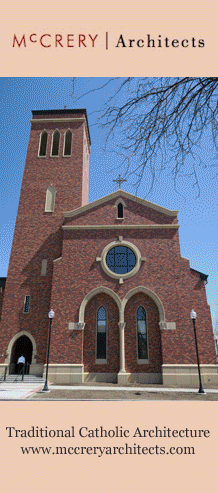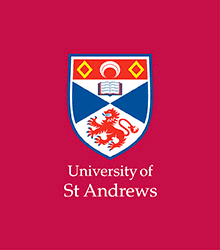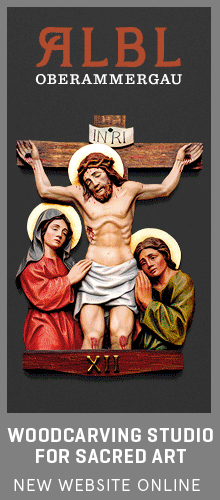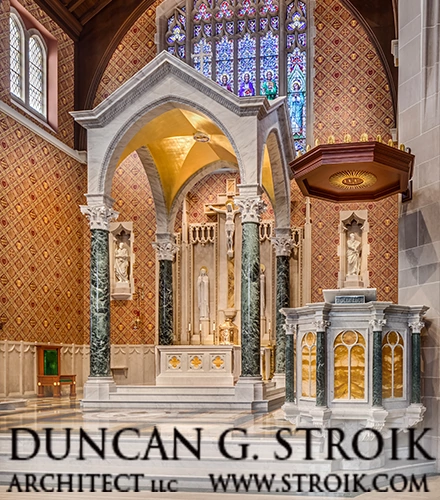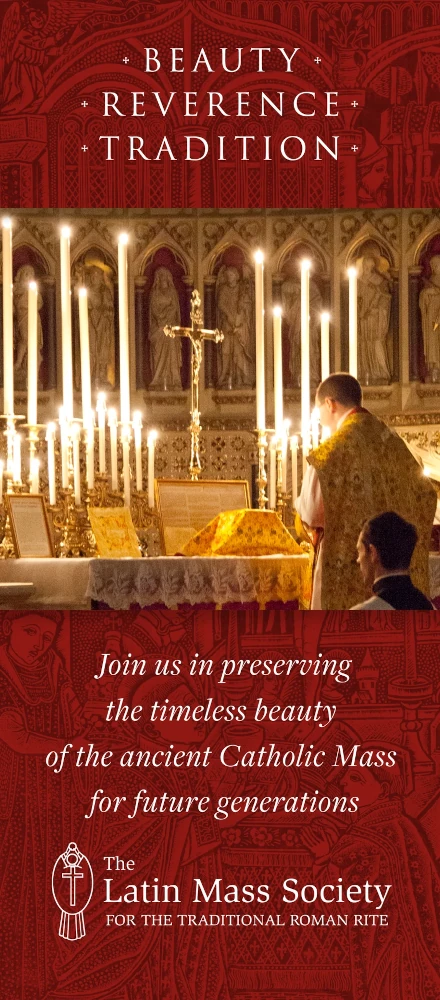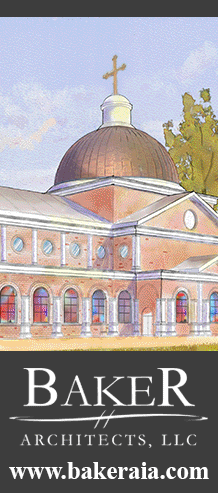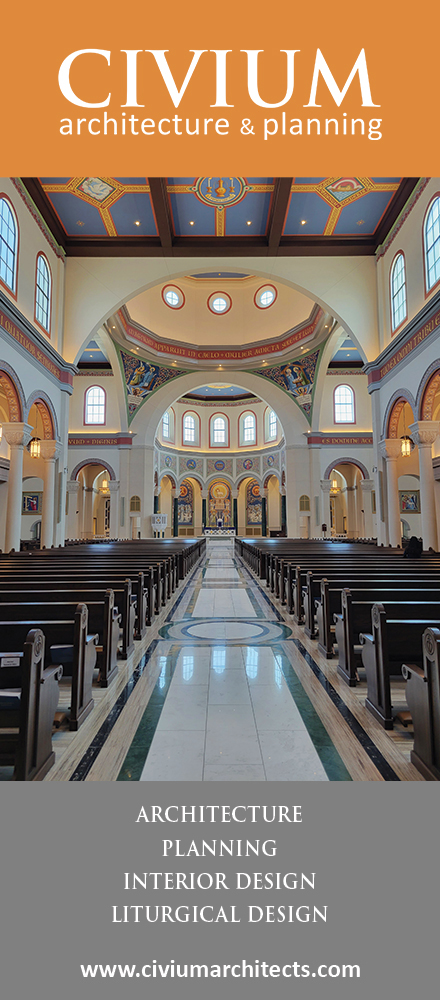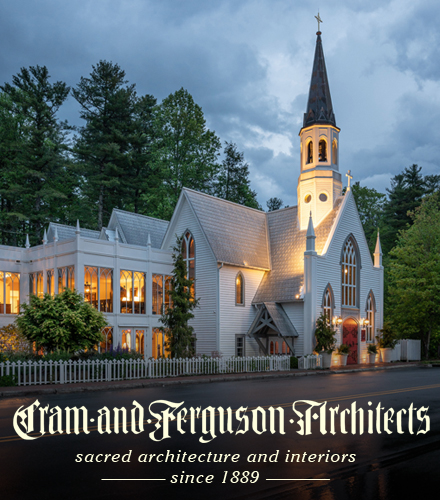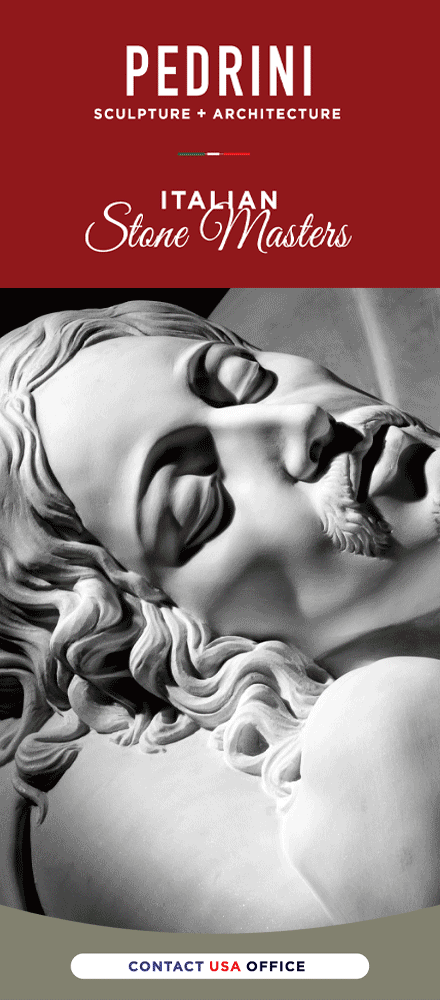I was invited to contribute something on Byzantine liturgy, so that the Catholic liturgical traditions could be more fully represented. While each liturgical tradition in the Church ought to preserve its own distinctive character and practices, there are certain basic approaches or perspectives that can be shared for mutual enrichment. Since there has been something of a crisis in the Western liturgy since Vatican II, it may be helpful to reflect on a few fundamental aspects that can assist the necessary restoration.
One important dimension of the Byzantine liturgical tradition is what may be called its “sensual” or incarnational approach. The Liturgy thoroughly engages the senses, and the body is actively involved. We were created and redeemed body and soul, so we ought to worship that way as well. To sit in a pew and sing from a hymnal (which is the extent of much Protestant, and “protestantizing,” worship) is hardly an experience that involves the whole person. A style of worship that is too cerebral or “spiritual” is not one that adequately expresses the adoration of the Incarnate God.
So we use lots of incense, candles, bells, chants, rich vestments, icons; we have processions and venerations of the Gospel book and the cross, and we employ liturgical gestures like the sign of the cross, deep bows, and prostrations. You love Jesus? Here is his icon: kiss it! Get involved, body and soul, in the worship of the Lord. (Of course, the bright-colored felt banners that have replaced sacred art in many modern Roman churches also engage the senses—but the sensation they produce is more like a touch of nausea than religious awe.)
Paradoxically, with all this active involvement of body and senses, the Byzantine Liturgy is meant to be a contemplative experience—not in the sense of silent prayer, for it is one of our liturgical principles that the worship should be unceasing, without gaps or breaks, like that of the angels in heaven—but in the sense of disposing oneself to receive the ineffable gift of the grace of God by personal openness in worship. Since the Byzantine Divine Office is complicated (unnecessarily so, but that’s another question), we usually just invite our guests to listen and receive, rather than hand them a stack a books and try to explain the complex liturgical navigation. There are sufficient repeating refrains to make participation easy, but listening deepens the experience. Without trying to push this point too hard, one can say that to read from a service book is to grasp with the eyes and the intellect, in a sense to be in control of the experience. To listen is to let go, to abandon oneself to the mystery without wishing to grasp or contain it.
The founder of our monastery, Archimandrite Boniface Luykx, himself a liturgical peritus at the Council, told us that many of the Council fathers explicitly insisted that the liturgical revisions be done so as to make it all intelligible and hence acceptable to modern man. Transcendence and mystery were not to be part of the new program, still less popular piety. They were embarrassed, for example, by feast days such as the Circumcision of Christ (which was in fact suppressed) and the Presentation of Mary (which I think is now merely optional). Both of these are still solemn feasts on the Byzantine calendar. They also succeeded at reducing the level of liturgical language to that of middle-school colloquial. But this insistence on intelligibility (and making “modern man” the norm for determining it) was a grave error. It was the beginning of the evacuation of statues, candles, relics, and timeless beauty from the churches, along with everything else that “modern man” finds unintelligible in his ignorance or contempt of the sacred traditions.![]() Therefore Byzantine churches aren’t “intelligible.” Some people complain that the churches are “cluttered,” that it’s hard to focus, that they don’t know what’s going on, that they are distracted by old ladies in babushkas walking around lighting candles. Good. It’s a little disorienting when you enter an Eastern church. It should be. Sensory overload is OK. You shouldn’t be able immediately to grasp and understand everything, and hence feel comfortable in your relative control of the situation. You are supposed to be entering the world of God, who is ineffable, mysterious, and beyond human comprehension, yet who has invited us into his life and holiness. Some people walk in and are immediately seized by the Holy Spirit and would exclaim, like Jacob, “This is the house of God and the gate of heaven!” They are like the envoys of St Vladimir who attended a Liturgy in Constantinople and said they couldn’t tell if they were in heaven or on earth. It didn’t matter if they didn’t know what page the choir was on.
Therefore Byzantine churches aren’t “intelligible.” Some people complain that the churches are “cluttered,” that it’s hard to focus, that they don’t know what’s going on, that they are distracted by old ladies in babushkas walking around lighting candles. Good. It’s a little disorienting when you enter an Eastern church. It should be. Sensory overload is OK. You shouldn’t be able immediately to grasp and understand everything, and hence feel comfortable in your relative control of the situation. You are supposed to be entering the world of God, who is ineffable, mysterious, and beyond human comprehension, yet who has invited us into his life and holiness. Some people walk in and are immediately seized by the Holy Spirit and would exclaim, like Jacob, “This is the house of God and the gate of heaven!” They are like the envoys of St Vladimir who attended a Liturgy in Constantinople and said they couldn’t tell if they were in heaven or on earth. It didn’t matter if they didn’t know what page the choir was on.
That is how worship should be. A Catholic church should be an anteroom of the Kingdom of Heaven. As time goes on, you do understand more, and maybe you can even find the right page. But that is still secondary. The primary thing is to fall on your face before the living God.
I hope to continue these reflections in a week or two, God willing.
Tuesday, August 23, 2005
A Word From the East
AnonymousMore recent articles:
The Exposition of the Holy Lance at St Peter’s BasilicaGregory DiPippo
The YouTube channel of EWTN recently published a video about the exposition of the Holy Lance at St Peter’s basilica on the first Saturday of Lent. This was formerly done on the Ember Friday, which was long kept as the feast of the Holy Lance and Nails, but since this feast is no longer observed, the exposition of the relic has been transferred to ...
The Feast and Sunday of St John ClimacusGregory DiPippo
In the Byzantine liturgy, each of the Sundays of Lent has a special commemoration attached to it. The first Sunday is known as the Sunday of Orthodoxy, because it commemorates the defeat of iconoclasm and the restoration of the orthodox belief in the use of icons; many churches have a procession in which the clergy and faithful carry the icons, as...
The Story of Susanna in the Liturgy of LentGregory DiPippo
In the Roman Rite, the story of Susanna is read as the epistle of Saturday of the third week of Lent, the longest epistle of the entire year. This episode is not in the Hebrew text of Daniel, but in the manuscripts of the Septuagint, it appears as the beginning of the book, probably because in verse 45 Daniel is called a “younger man”, whic...
A New Edition of the Monastic Breviary Available SoonGregory DiPippo
The printing house of the Monastère Saint-Benoît in Brignole, France, Éditions Pax inter Spinas, is pleased to announce the re-publication of the two volumes of the last edition (1963) of the traditional Latin Monastic Breviary.The Breviary contains all that is necessary to pray the complete Monastic Divine Office of Matins, Lauds, Prime, Terce, S...
A Mid-Western Saint from Rome: Guest Article by Mr Sean PilcherGregory DiPippo
Thanks once again to our friend Mr Sean Pilcher, this time for sharing with us this account of the relics of a Saint from the Roman catacombs, which were brought to the cathedral of Dubuque, Iowa, in the 19th century. Mr Pilcher is the director of Sacra: Relics of the Saints (sacrarelics.org), an apostolate that promotes education about relics, and...
Fons et Culmen Sacred Liturgy Summit - July 1–4, Menlo Park, CaliforniaJennifer Donelson-Nowicka
You are cordially invited to the Fons et Culmen Sacred Liturgy Summit, which will be held from July 1-4, in Menlo Park, California!Fons et Culmen Sacred Liturgy Summit gathers together Catholics who love Christ, the Church, and the Church’s sacred liturgical tradition for: - the solemn celebration of the Mass and Vespers; - insightful talks on...
A Lenten Station Mass in the Roman ForumGregory DiPippo
Today’s Mass is one of the series instituted by Pope St Gregory II (715-31) when he abolished the older custom of the Roman Rite, by which the Thursdays of Lent were “aliturgical” days on which no Mass was celebrated. The station appointed for the day is at the basilica of Ss Cosmas and Damian, which was constructed by Pope St Felix IV (526-30) in ...
Do Priests or Religious Need Special Permission to Pray a Pre-55 Breviary?Peter Kwasniewski
On occasion, I receive an email like the following (in this case, from a seminarian): “Do you happen to know of any sources/authoritative references which you could point me to that explain why praying the Pre-55 Breviary definitely satisfies the canonical obligation for clerics or religious? As I am strongly desirous of the Pre-55 Liturgy, I ...
Early Bird Registration Discount for CMAA Colloquium Ends March 31st!Jennifer Donelson-Nowicka
Join us this summer for world-class training in the Church’s treasury of sacred music.Early bird registration discount ($50 for colloquium, $50 for Vocal Intensive course, $150 off for Chant Intensive) ends March 31st!Here’s a special invitation from our new president, Fr. Robert Pasley.The Church Music Association of America is pleased to announc...
The Annunciation 2025: Dante and the Virgin MaryGregory DiPippo
The specific date of birth of the great poet Dante Alighieri (1265-1321) is unknown, but this Thursday, March 27th, is the anniversary of his baptism, which took place during the Easter vigil of 1266. The language which we call “Italian” today originated as the dialect of his native region of Tuscany (more specifically, of the city of Florence, but...


